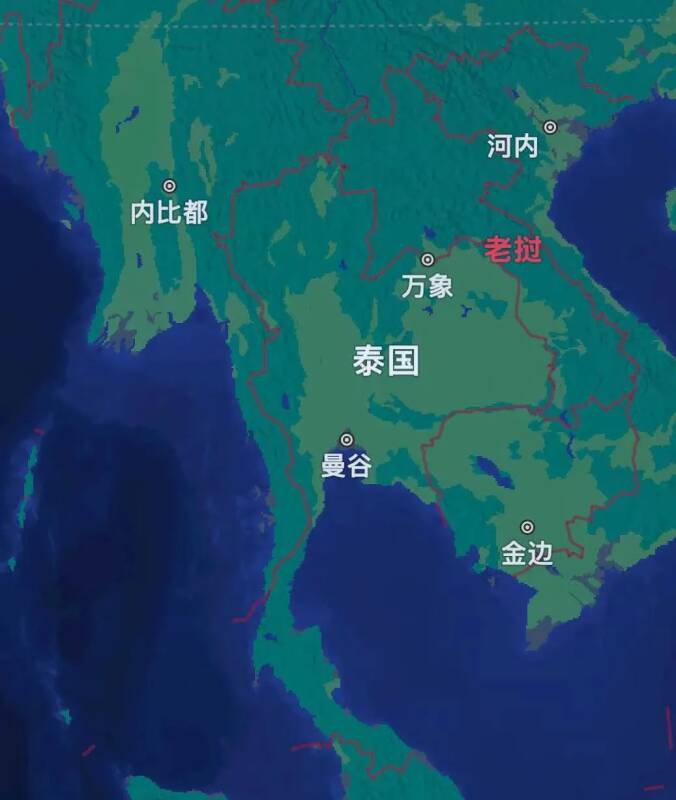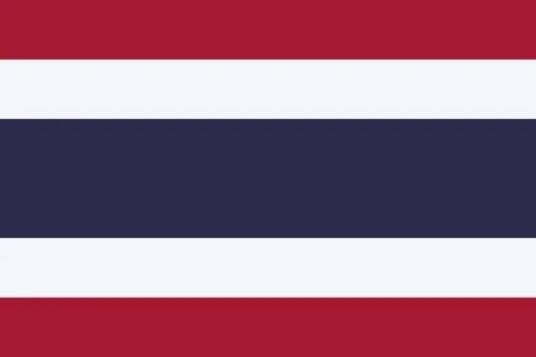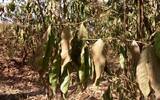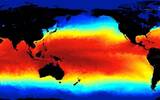Introduction of varieties grown in coffee producing areas in Thailand in Asian countries
In Asia, there are many coffee producing countries, such as Laos, Indonesia, East Timor, China and Thailand.
Thailand Thailand
The Kingdom of Thailand (The Kingdom of Thailand) is located in the south-central part of the Indo-China Peninsula, facing the Gulf of Thailand in the Pacific Ocean to the southeast and the Andaman Sea in the Indian Ocean to the southwest. Bordering Myanmar in the northwest, Laos in the northeast, Cambodia in the east and Malaysia in the south, the land area is 13000 square kilometers.

The Thai national flag is rectangular and consists of five horizontal bands: red, white, blue, white and red from top to bottom. The blue band is twice as wide as the red and white band, in which red represents the nation and symbolizes the strength and dedication of the people of all ethnic groups. Thailand takes Buddhism as its national religion, white represents religion, symbolizes religion and other purity, in addition, Thailand is a constitutional monarchy, blue represents the royal family, while blue broadband symbolizes the royal family in the middle of people of all ethnic groups and pure religion.

The overall topography of Thailand is high in the north and low in the south, tilting from northwest to southeast, and more than 50% are plains and lowlands. The terrain is mainly divided into four natural areas, namely, the mountain jungle in the north, the flat and fertile Chao Phraya plain in the middle, the Khorat plateau in the northeast, the continuation of the western mountains in southern Thailand, and the Malay Peninsula to the south.
Most parts of Thailand have a tropical monsoon climate, and the whole year is divided into three seasons: hot season (mid-May), rainy season (mid-June-October) and cool season (November-February). The annual average temperature is 27.7 ℃, the highest temperature can reach more than 40 ℃, the annual average rainfall is 1100 mm, and the average humidity is 66% 82%.
Thailand is rich in natural resources, high-altitude mountains, many rivers, abundant Rain Water, and suitable climate and temperature, making coffee one of the country's main cash crops.
Coffee producing area
According to the differences in regional climate and geological conditions, the Thai government is mainly divided into north and south coffee growing areas. Chiang Mai, Chiang Rai and Lampang are the main growing areas of Arabica varieties in the north, while Chuntang and Suratani in the south are the main growing areas of Robusta.
Chiang Mai (Chiang Mai): located in northern Thailand, bordered by Rain and Myanmar in northern Chiang Mai, located in the mountains and riverside basins of northern Thailand, with north-south mountains, growing mountains between 1000 and 1600 meters above sea level, mainly planting Kaddura, Kaduai and Katim varieties.
Chiang Rai: located in the northernmost part of Thailand, bordering Myanmar in the northwest and Laos in the northeast, the average elevation is 580m. The mainstream of the Mekong River is in the northeast of Chiang Rai Prefecture, and its tributaries flow through Chiang Lai Prefecture. Coffee is grown between 1000 and 1600 meters above sea level, mainly growing varieties of Kaddura, Kaduai and Katim.
Nambang (Lampang): also located in northern Thailand, with Chiang Rai, Lai Hsing, Chiang Mai and other provinces as neighbors, located in the mountains surrounded by the Wang River broad valley. Coffee is grown between 1000 and 1600 meters above sea level, mainly growing varieties of Kaddura, Kaduai and Katim.
In Thailand, there is a special and expensive kind of coffee-"like shit coffee". Elephant shit coffee is also known as "black ivory". In the production of elephant dung coffee, fresh coffee beans are collected by hand, then rice, bananas and coffee beans are mixed well and fed to elephants artificially. After entering the elephant's body, the coffee beans are mixed with stomach acid and fermented for 17 hours before they are excreted out of the body, followed by manual fine selection of elephant feces and later coffee treatment.
Enzymes in the elephant digestive system can digest the protein of coffee beans. Because the protein makes the coffee bitter, the less the protein, the less bitter the coffee and the smoother the taste. However, due to the difficulty of production, the price is more expensive.
Important Notice :
前街咖啡 FrontStreet Coffee has moved to new addredd:
FrontStreet Coffee Address: 315,Donghua East Road,GuangZhou
Tel:020 38364473
- Prev

The drought continues! In the future, Robusta will have a supply gap of 2.7 million bags
Recently, global coffee prices have plummeted as weather improves in many countries, exports increase and international inventories rebound. In the earlier April, due to the drought in Vietnam, Vietnam lacked water resources. The main coffee-producing areas were severely affected by high temperatures. Coffee trees also withered, resulting in a decline in production.
- Next

289 people have been killed! Floods hit Kenya's agricultural industry hard
According to the meteorological department, the El Niño phenomenon formed last year is expected to end in April this year, but it will take June to July to truly weaken, so it still affects many coffee producing countries. In East Africa, many countries have experienced heavy rains and caused severe floods, resulting in large numbers of casualties.
Related
- Customers have "changed" Manner's new products! Shop assistant: Please don't mess around!
- Remove sockets in customer areas at Starbucks stores?! Netizen: I won't go if I really tear it down
- What is the difference between the taste steps of sun-dried coffee and washed coffee? Why is sun-cured coffee sweeter and washed coffee sour?
- The recipe for salty grapefruit dirty is revealed! Coffee Festival salty grapefruit dirty coffee making materials parameters ratio milk share!
- How about the flavor of Sunlight 74158 at Sidamo Banshaha Mathieu Processing Factory in Ethiopia? 74158 Share the proportion of coffee brewing parameters!
- What effect does Italian American coffee with filter paper have? Will coffee taste better if it is put on filter paper at the bottom of the powder bowl?
- What is the color difference in coffee beans? What are the characteristics of honey processed coffee beans? Why are the anaerobically treated coffee beans uneven in color?
- How does novice Xiaobai quickly get started and make coffee? Newbies learn to make coffee by hand and share the specific steps and process process!
- Costa tea has a shelf life of 100 years?! Expert: Unable to verify
- It's a huge uproar! American milk addition was rejected by Manner employees?!

